Best guitars for beginners 2025: get the best start with these beginner-friendly acoustic and electric guitars
Check out our expert recommendations for the best guitars for beginners, kids and guitarists with small hands

As a young guitarist, buying your very first guitar is a huge moment. The sheer amount of possibilities for budding musicians makes learning the guitar an exciting prospect – and even a potential career for some – so it's worth making sure you buy one of the very best guitars for beginners.
Whether you opt for an acoustic or electric guitar, there's no point wasting your money on a beginner guitar which isn't suitable - especially if you're gearing up for going back to school and starting guitar lessons, or deciding to pick up the instrument as an adult. You need something which will grow with you, and inspire you to develop as a player.
When first starting out, most guitarists will opt for an acoustic guitar, as it's cheaper and a little more portable than a full electric guitar setup. There's no need for you to buy a separate guitar amp, so all you need to do is focus on the playing. The acoustic is a little bit harder to play than the electric guitar, but this is (surprisingly) a good thing. If you stay with the acoustic, then you'll be set - and if you move to the electric, everything will feel that bit easier.
If you're looking for versatility, then the electric guitar is the one to choose. There is, however, a lot more to think about in terms of components, parts and setups. Getting your head around these things is crucial if you want to play the electric guitar though - and if you want to play rock, metal or blues particularly, then the electric is the best place to start.
Whether you go for electric or acoustic, our experts have prepared a range of the best beginner guitar options that hit the mark in terms of sound, build quality and playability. All of the guitars on our list clock in at under $500/£500 - and some come in well under that figure.
What are the best guitars for beginners?
When it comes to acoustic guitars, the Martin LX1E Little Martin is our number one choice for beginners. It’s a fantastic option for acoustic players of any ability or age range, to be honest - but the outstanding craftsmanship from Martin makes this spot on for beginner players. It’s definitely more expensive than your typical beginner guitar, but if your budding guitarist is showing plenty of enthusiasm and desire to play, then we’d say it’s worth the investment.
If the beginner guitarist in your life would rather play the acoustic guitar, then the Squier Classic Vibe Stratocaster ‘50s is the one they should choose. Squier’s Classic Vibe range sits at the top of their quality ladder, and for the money we can’t fault them. The quality isn’t far off from Fender’s Mexican-made Player Series, and the combination of superb build quality, excellent tones and stunning looks make for a package you're unlikely to grow out of any time soon.
Best guitars for beginners: Electric guitars

Specifications
Reasons to buy
Reasons to avoid
The Squier Classic Vibe ‘50s Stratocaster is a sight to behold. It sits above Squier’s entry-level Affinity range but boasts far superior build quality, hardware and tone. We particularly liked the vintage tuners and tinted slim-profile neck, while the range of sounds produced by the Fender-designed single coil pickups are superb.
There is a slight leap in price above the Affinity guitars, but the accompanying leap in overall quality makes this a guitar that shouts value for money. We’d even go as far as to say the Classic Vibe range in its entirety gives many higher priced guitars - including Fender’s own Mexican range - a run for their money. Highly recommended.
Read the Squier Classic Vibe ‘50s Stratocaster review
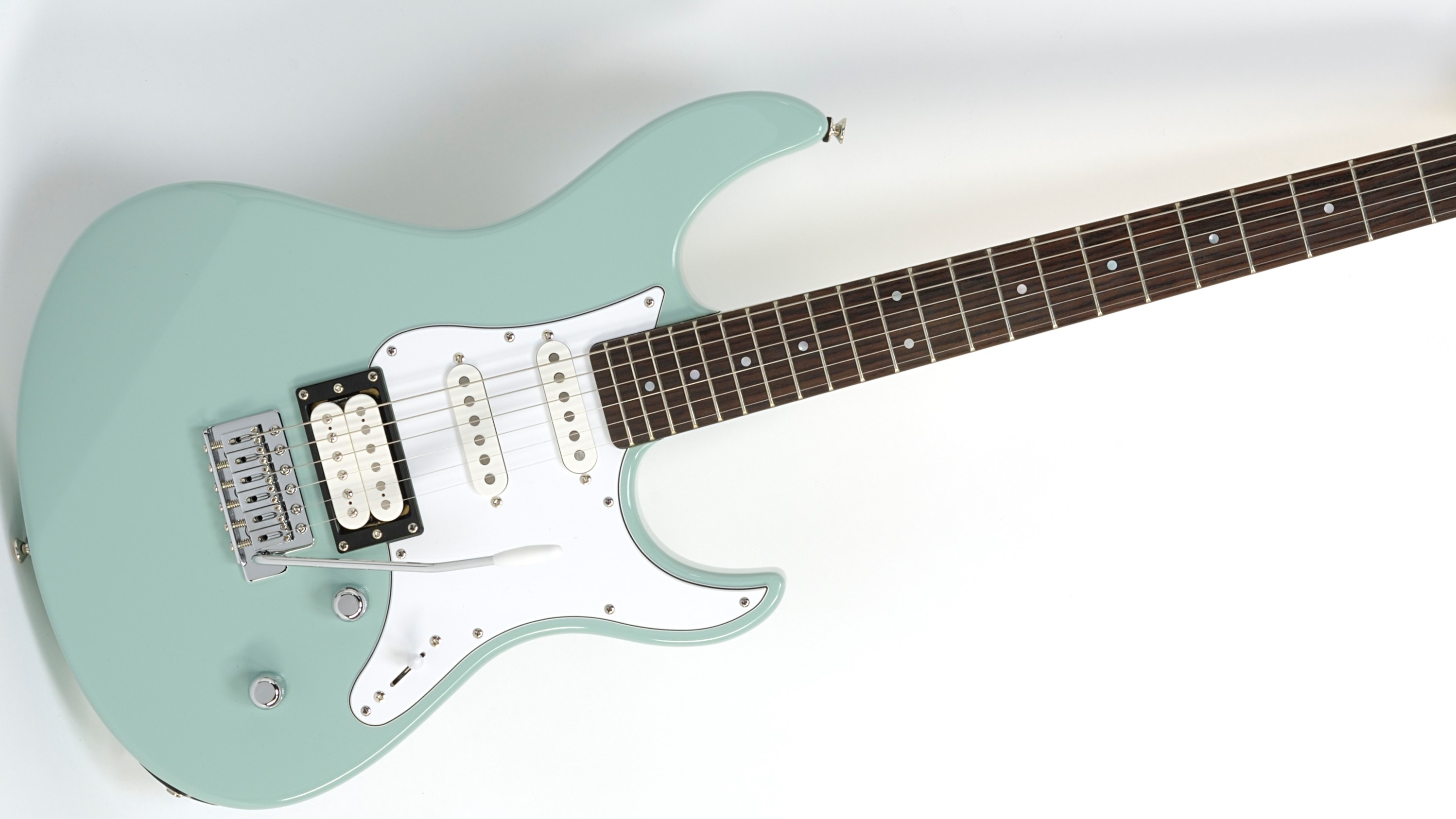
Specifications
Reasons to buy
Reasons to avoid
The Yamaha Pacifica has long proved a benchmark for quality and specification, and the 112V remains one of the best guitars for beginners. The 112 is far from fancy and simply concentrates on the bare necessities. Yet the construction is of excellent quality. Trust us, if looked after, this will be a guitar for life.
By design, it's an altogether more modern, brighter and lighter take on a hot-rod Strat. But when we say brighter that doesn't mean overly shrill. In fact the bridge humbucker surprised us during testing; it's beefy without being too midrange heavy, and features a coil-split - which essentially transforms its bridge humbucker into a single coil - for increased versatility.
The solo single-coils impress - there's plenty of percussion and with a little mid-range beef added from an amp, these get you to the correct Texas toneland. Neck and middle combined produces a fine modern Strat-like mix - the added brightness will cut through a multi-FX patch nicely.
Read the full Yamaha Pacifica 112V review
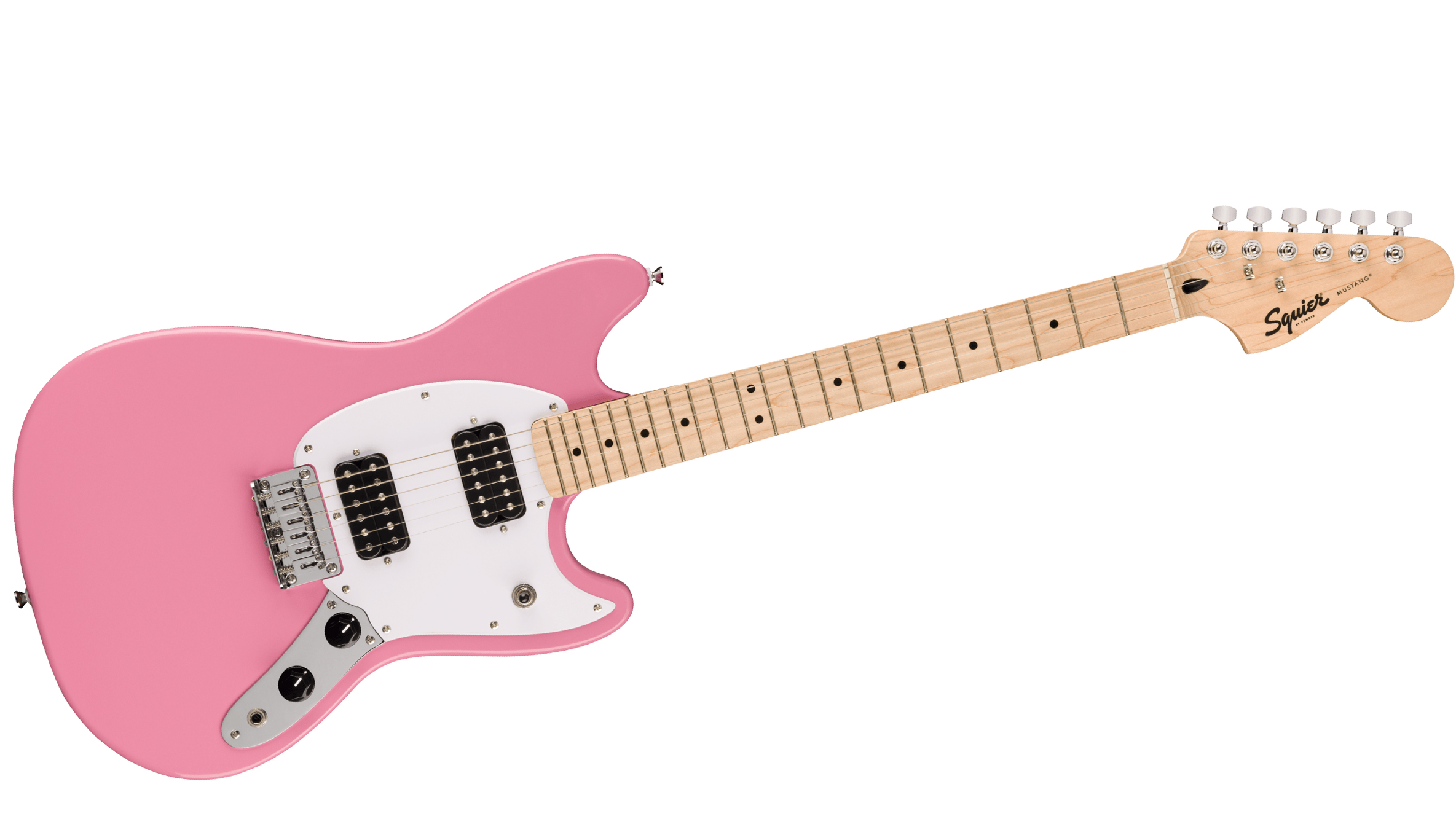
Specifications
Reasons to buy
Reasons to avoid
This successor to the Squier Bullet Mustang HH offers new finishes and the same great value. It's also ideal for younger players, or anyone looking for a more accessible electric guitar experience. The Mustang has a shorter 24-inch scale compared to other popular Fender designs like the Telecaster and Stratocaster and this makes chords and string bends easier for smaller hands. But I've been playing guitar for over 25 years and choose a Mustang as my main guitar because I prefer that easier playability too.
The Sonic HH model is an excellent choice for rock fans too with its two humbuckers to offer a thicker, chunkier sound for overdriven power chords. And the smooth satin finish on the back of the neck will also enhance the playability further, coupled with the comfort of the 9.5 fretboard radius. This is an assured and highly recommended first step into electric guitars from a trusted brand.

Specifications
Reasons to buy
Reasons to avoid
The Streamliner concept is simple: to create more affordable Gretsch guitars without losing their specific DNA. This particular example is a semi-hollow design, which means it puts out more volume when unplugged and offers an earthier, less aggressive tone than a solidbody design when plugged into an amp, which is great for blues and country music. It does, however, have a slightly thicker neck than the other electric guitars in our guide, so it's not one of the best guitars for small hands.
The G2622's construction gives a different response and resonance to other new releases from Gretsch and, with these pickups, moves further from the Gretsch sound, approaching the character of Gibson's classic ES-335 design. The beefier Broad'Tron humbucker pickups broaden the sonic potential, while staying close to the classic iconography. If you want a great-value semi-hollow, this is among the best sub-$500 electrics around.
Read the full Gretsch G2622 Streamliner review
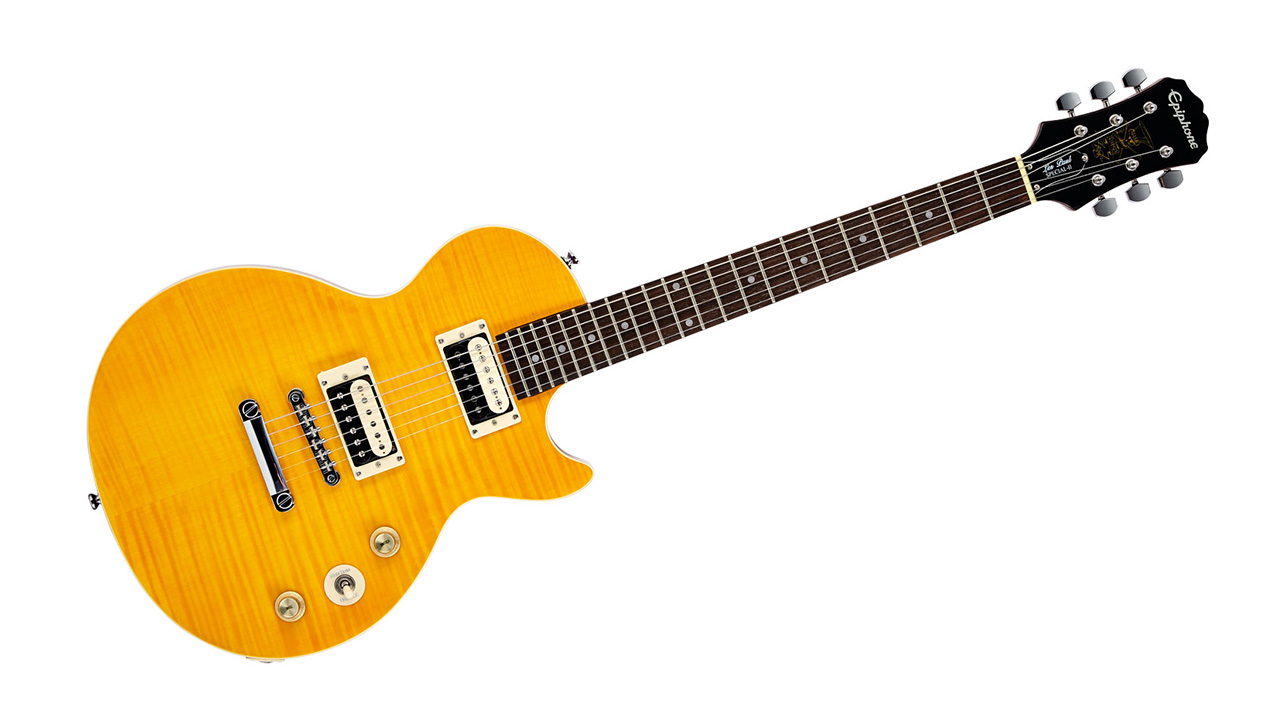
Specifications
Reasons to buy
Reasons to avoid
Aimed at guitarists taking their first steps in rock, this Slash-approved beginner model certainly offers the look of the Guns N' Roses guitarist's preferred instrument. It also features two of Epiphone's exceedingly powerful Ceramic Plus humbuckers; plus, built into the bridge pickup ring is a Shadow E-Tuner, activated via a small push- button on the ring – it's incredibly useful for first-timers to have a tuner close to hand at all times.
During testing, we felt that the string height was plenty low for beginners, and the pickups are high-output enough for a decent rock guitar tone. The neck pickup did sound a little darker than expected, and as such was a little underwhelming. However, any misgivings you may have will be more than washed away by the great price.
Read the full Epiphone Slash 'AFD' Les Paul Special-II review
Best guitars for beginners: Acoustic
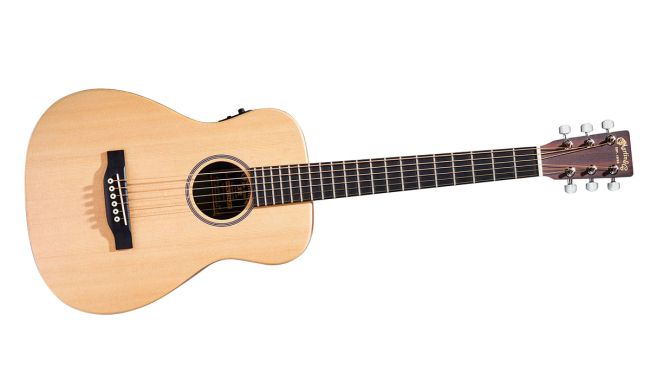
Specifications
Reasons to buy
Reasons to avoid
The Ed Sheeran-favoured Little Martin has a shorter scale length than many of the other acoustic guitars in this guide, which makes it one of the best guitars for small hands. It does feel a little industrial, but from the first strum its more conventional spruce-top voice will have you captivated. It's serious fun - hence why it's our number one pick of the best acoustic guitars under $500/£500.
The material may be man-made, but the fingerboard and bridge look like dense ebony, while the dark-hued HPL back and sides ape a dark, rich mahogany, giving it a classy feel. Like its acoustic voice, we found that the Martin sounds very 'conventional' plugged in - and that's no bad thing, especially for beginners. It's really easy to dial in, making it open-mic ready – when the time comes!
Read the full Martin LX1E Little Martin review

Specifications
Reasons to buy
Reasons to avoid
As one of the ‘big two’ in acoustic guitars - along with Martin - there is a level of quality and excellence that can be reasonably expected from Taylor. This is, after all, a brand which produces guitars that cost as much as a family car. Yet with the Taylor GS Mini, they’ve produced a guitar which packs in all that high-end know how and experience for a price that sits a shade under $500.
When testing out the GS Mini, we found that it's small enough for anyone to feel comfortable with, yet produces the kind of tone that you'd usually only expect from something much bigger. Build quality and overall playability is superb, making this the perfect guitar for anyone, no matter where they are in their playing career.
Read the Taylor GS Mini review
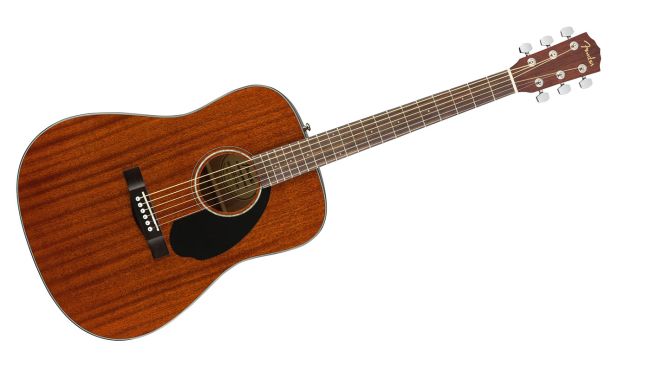
Specifications
Reasons to buy
Reasons to avoid
The entry model of the Classic Design Series is a good reminder of just how much guitar you can get for your money at the more affordable end of the market. Here, we're offered a solid-wood mahogany top, laminated mahogany back/sides and an inviting rolled fretboard edge, which makes playing comfortable for beginners.
The CD-60S's action is great out of the box, too. The mid-character of mahogany is certainly here, bringing some meat to a brightness usually associated with spruce tops. The result is something that’s genuinely inspiring to play and chimes in chord work. Why should new players settle for just okay when they need to be comfortable and inspired?
Read the full Fender CD-60S All-Mahogany review
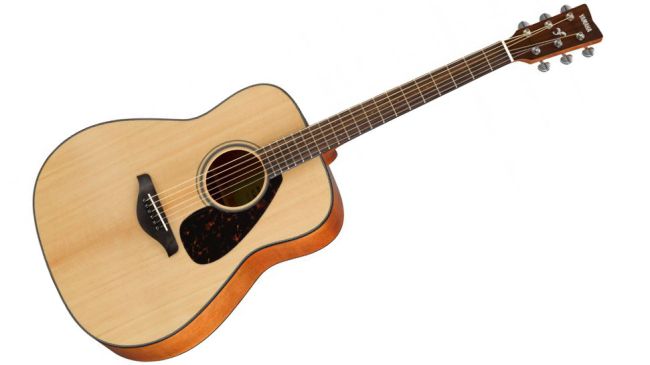
Specifications
Reasons to buy
Reasons to avoid
This affordable model from guitar giant Yamaha is a typically classy, clean acoustic build with a matt finish that gives a lived-in working guitar appearance. There's little ornamentation, the fingerboard dots are small and lack contrast but the white side dots are clear and bright – great for beginners.
The three-piece neck, with a roomy full C profile, immediately engages. The tuners are quite generic but more than up to the job, while the nut and compensated saddle are well cut with a sensible, get-on-with-the-job string height. Dreadnoughts, of course, come in many different tonal shades but we should expect plenty of roomy lows, a strong thump in the lower mids, crisp highs: a big projecting sound. Well, the FG800M ticks those boxes and some.
Read the full Yamaha FG800M review

Specifications
Reasons to buy
Reasons to avoid
For younger players or those of more diminutive stature, a parlor guitar is a perfect place to start, combining easy playability and manageable body size. The Ferndale P3-E Parlor makes a brilliant first-time acoustic, giving you premium features at a very reasonable price.
An own brand of British retailer PMT, the P3-E is set up brilliantly out of the box, making fretting chords a breeze. The slightly narrower than usual string spacing means it fits nicely into smaller hands, making overcoming the first steps of playing guitar much more straightforward.
Read the full Ferndale P3-E Parlor review
Best guitars for beginners: Buying advice

What to consider when buying a guitar for a beginner
MusicRadar's got your back
There are a few things to consider when buying one of the best guitars for beginners. There are so many options when it comes to buying a guitar, and it can often seem overwhelming - but we're here to tell you about some of the options you have, and how they'll best suit your needs.
Should a beginner start with an acoustic or electric guitar?
The first choice you need to make is whether you want to play the electric guitar or the acoustic guitar. Both types of guitar are great to play, and will eventually reap the same benefits, but there are some major differences in the sound, playing style and overall experience.
With acoustic guitars, the sound is the most obvious difference. Designed to work without amplification, acoustic guitars require no extras to work. Electric guitars, on the other hand, need amplification to be used to their full potential. You can play an electric guitar unplugged, but you'll get a quiet tone out of them which nobody else will be able to properly hear. What's the point in playing quietly, though?
Another big difference with acoustic guitars is their playability. Acoustic bodies are much bigger than electric guitar bodies, so if you're a smaller person, or just need things to be as easy as possible, then it's worth putting in some serious thought over whether you want to play an acoustic or electric guitar.
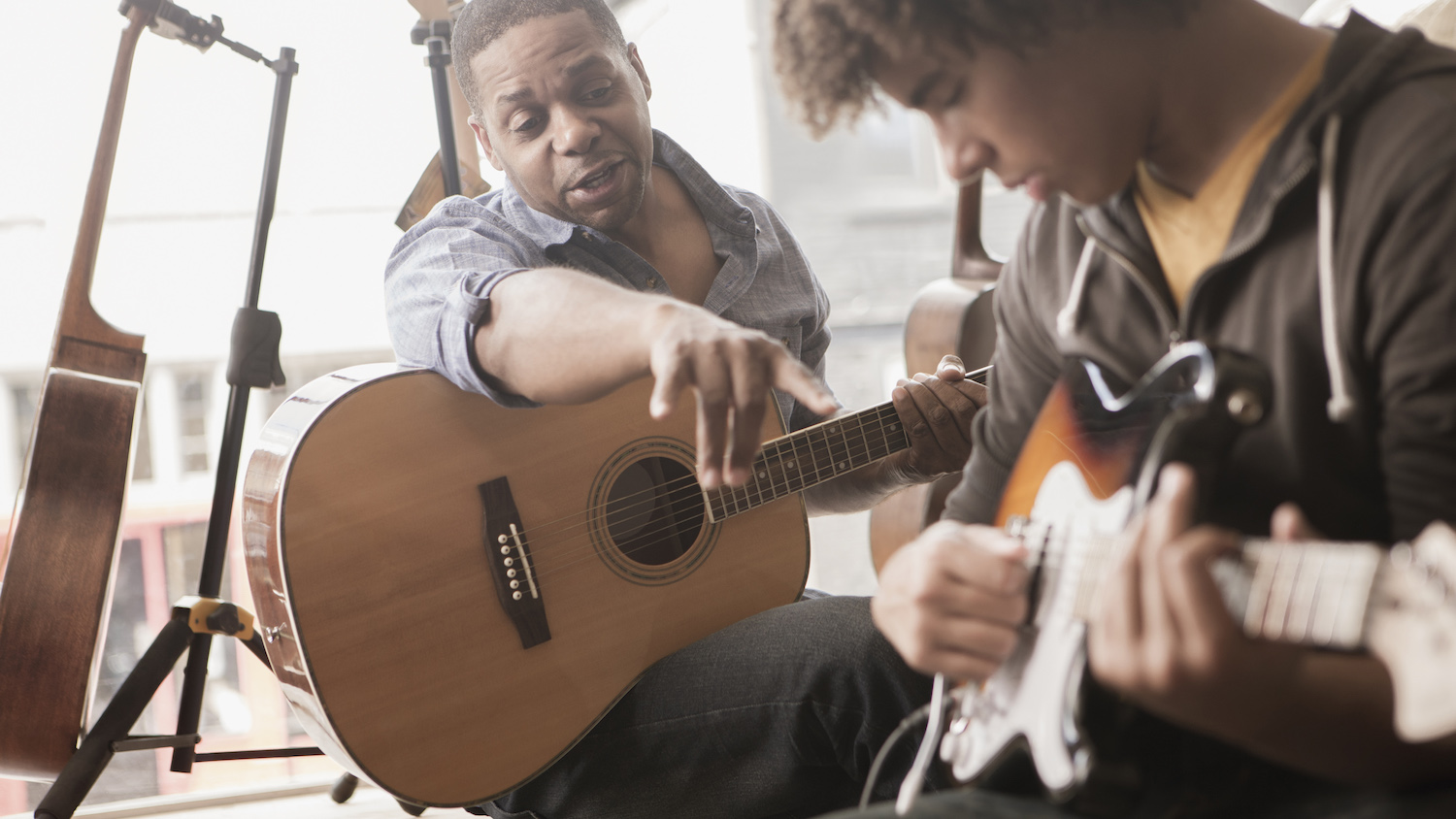
Everything you need to know about beginner guitars: acoustic
There are a few key factors you should consider if you're looking to start your guitar journey on an acoustic. Perhaps the most important is body shape. Larger body guitars are great for strummers or those wanting to fit into a band, as they produce a much louder, full sound with pronounced bass tones. The downside is that the bigger body size means they can be uncomfortable and cumbersome, particularly to less experienced, younger or smaller players.
Smaller-bodied acoustics are significantly easier to handle, but don’t kick out as much volume or tone as their larger-bodied brethren. However, if you want to play fingerstyle, or have no intention of joining a band, then this probably won't concern you.
The famous dreadnought shape – arguably the most common – offers a good balance between size and projection, and is a good place for most beginners to start. Some acoustic guitars will have electronics built-in, which means it can be amplified for those occasions where you’re playing with others.
Aside from the guitar's body shape, you’ll want to look at the guitar’s neck and fingerboard, and the distance between the strings and frets. We’ve heard countless tales of people who want to learn the guitar, but have been put off after playing acoustic guitar strings that feel like suspension bridge cables. For this reason, electrics are often a better bet for many learners, particularly those with smaller hands.
Everything you need to know about beginner guitars: electric
If you’ve decided to start with an electric guitar, the choices are far wider and more varied. Electric guitars come in many different shapes and sizes, but there are a few fundamental points which are common across every guitar. Assuming you want to play plugged in, you’ll want to look at the guitar’s pickups. These are the devices which translate your playing into an electrical signal that a guitar amp turns into sound.
Single coil pickups (found on most Stratocasters and Telecasters) are versatile, and suit many different playing styles like rock, jazz and blues. Humbuckers (found on most Les Pauls and Gretsches), on the other hand, produce a fatter, rounder sound which works well for heavier styles or music. If you’re planning on using distortion, it’s worth noting that Single coil pickups will make a bit of background noise, but Humbuckers won’t. It’s all because of some clever science-y stuff - but we won’t bore you with that right now.
Electrics also tend to have smaller necks than acoustic guitars, which is good for beginners. They make great guitars for kids and those with small hands too – particularly ‘short-scale’ models, where the frets are closer together, making it easier to play chords.
At the start of your playing career, some factors that more experienced players favour – like different woods for bodies and necks – are less of a concern when it comes to choosing the best beginner guitar for you. The important thing when starting is to find a guitar which is comfortable, sounds good and has that all-important lure to keep you coming back to it. As with anything, you get what you pay for, but with the list of the best guitars for beginners we believe we’ve found the sweet spot between price, performance and playability.
Read more about how we test music making gear and services at MusicRadar.
Related buying guides
- Take your pick from the best acoustic guitars for beginners
- These are the best electric guitars for beginners
- Kick off your playing career with the best beginner guitar amps
- Is space an issue? Here are the best desktop amps
- Start playing today with our choice of the best online guitar lessons
- Check out some of the best gifts for guitarists
Want all the hottest music and gear news, reviews, deals, features and more, direct to your inbox? Sign up here.
Chris Corfield is a journalist with over 12 years of experience writing for some of the music world's biggest brands including Orange Amplification, MusicRadar, Guitar World, Total Guitar and Dawsons Music. Chris loves getting nerdy about everything from guitar and bass gear, to synths, microphones, DJ gear and music production hardware.
- James Farmer
- Rob LaingReviews Editor, GuitarWorld.com and MusicRadar guitars
